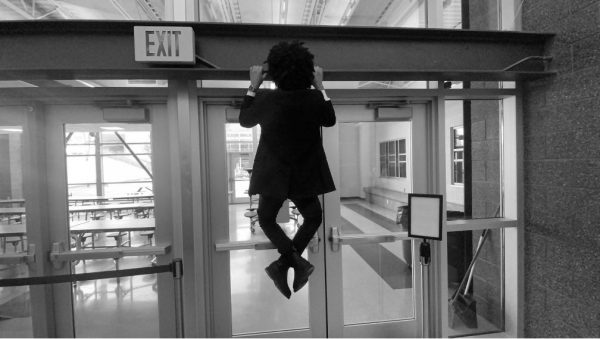The Buzz of Bees
While Dr. Joseph Wilson may love nature, what he loves the most are bees. Wilson, an assistant professor of biology at Utah State University, spoke to the people of Park City this month about bee preservation and education at The Swaner Preserve and EcoCenter.
“What’s the Buzz? Bee Diversity and Conservation” presented a plethora of information regarding bee populations, specifically in Utah. Wilson is well versed in the world of bees, having published books, podcasts, and many speeches about bees. He specifically focuses on how bees are so incredibly misinterpreted.
There is currently a massive social movement trying to Save the Bees! But how many of these bees actually need saving? The bees that are getting the attention, the bees that need to be rescued, are the commonly represented bumblebees. These types of fuzzy honey bees live in hives together. However, the majority of bees that populate the state of Utah belong to a different classification, the solitary bee.
There are 900 native bee populations in Utah, and the majority of these bees are solitary bees. Solitary bees differ from the typical bumblebee. They do not live in hives, the female creates her own nest, they live independently, they are incredibly efficient pollinators, and they are the largest percentage of the bee population.
Wilson’s work closely follows this large subset of the bee population. His work focuses on the misconceptions the vast majority of the public has about bees. The honey bee is the most well-known bee in popular culture. We see it in The Bee Movie, the large hive full of workers working together. Perhaps, the true facts about bees are difficult to comprehend due to their academic language. Wilson’s new book The Bees In Your Backyard makes the information about bees more approachable, so there is less spread of misinformation.
Solitary bees are independent by nature. Is that a choice? Bees are more efficient at pollination when they are alone. But, the public continuously misunderstands bees and places them as a part of the hive. In reality, bees are hardly ever in such large groups.
Human solitary is often misunderstood as well.
There is a major difference between being alone and being lonely. Although this concept is recognized, it is not a universally accepted fact.
In fact, being solitary can be incredibly beneficial. Dr. Thuy-vy Nguyen’s research at Durham University has shown that alone time is crucial to improving self-esteem. A “healthy motivation for solitude,” as Nguyen explains, led college students to have greater self-esteem, greater sense of group relationships, and fewer experiences of loneliness. A study done by the New York Times revealed that being alone leads to a holistic regulation of emotions.
Why isn’t solidarity being practiced with regularity? There is a common social stigma against alone time. The foundation is historical. Solitary confinement was and still is often used as a punishment. The difference between accepting being alone as a good thing rather than a societal punishment largely has to do with why we are alone in the first place.

The source is choice. If one decides to be alone by choice, positive benefits are reaped. Contrastingly, if alone time is forced, numerous negatives can be found. There is a reason why most synonyms for alone have negative connotations. Loneliness is a dangerous state. According to psychologist Guy Winch, loneliness can cause as many health complications as smoking. It can lead people towards addiction and more distorted thinking. However, if this alone time is treated with more positivity, the more positive benefits can be applied.
Being alone does not need to yield loneliness. If the social stigma and historical use of solidarity as a punishment dissipates, positive benefits can be found by spending time alone.
To put it simply, humanity can learn a lot from bees.
It is not known if bees have free will, but, it seems to be that their isolation is by nature. Solitary bees have no social stigma regarding independence, humans do. Solitary bees are more efficient when alone, so are humans. If solidarity becomes more of an individual choice, humanity can become almost as efficient as the solitary bee.
Just like how bees are misinterpreted by society, so are humans. It’s common to think of bees as hive creatures constantly surrounded by others. But in reality, the majority of bees are independent. Humans are very close to bees in that nature.
In the early stages of development, children see everyone around them as a part of an accepted group they are not included in. Therefore, they view their time alone almost as a social punishment. If the vast majority of children are thinking this way, who is actually in the accepted group?
The misinterpretation of spending time alone needs to be systematically changed. If alone time can be associated with positive emotions, such as the opportunities of self-reflection, efficiency, and creativity, the positive effects will soon become very apparent.
Humanity needs to learn from bees.





